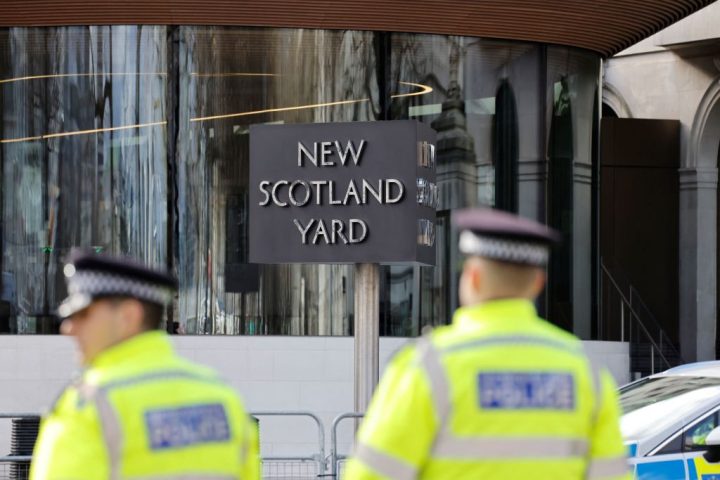For the past 12 months, the Metropolitan Police has been in the organisational equivalent of a body scanner. Every vital organ of this 194-year-old beast has been examined in detail by Baroness Louise Casey and her review team enabling them to understand the Met in a way that no one has done before. The results, from top to toe, are alarming – and demand emergency surgery.
Scotland Yard commissioned the report after one its officers, Wayne Couzens, was jailed for life for the kidnap, rape and murder of Sarah Everard in March 2021. The backdrop also includes a string of other shocking scandals that has contributed to plunging levels of public confidence: in five years the proportion of people who believe the force does a good job locally has fallen from 70 to 45 per cent.
If the Metropolitan Police was a business, it would be bust by now
The underlying reasons for the Met’s malaise, Casey found, are mainly self-inflicted. It has a management system that is run as a ‘series of disconnected and competing moving parts’, with ‘broken’ vetting procedures, poor support for its 47,000-strong workforce and a lack of long-term planning. When a senior officer was asked at a meeting how many detectives the Met needed, he replied: ‘I don’t have a crystal ball.’
Even more concerning are the conclusions about the culture of the force: arrogant, prejudiced and defensive. Many of us who have reported on the Met know there’s been a prevailing attitude of ‘we know best’ and ‘that’s the way we do things’, but this review sets it out in a way that even Met die-hards who are in denial can surely no longer deny.
Some will no doubt dispute the most contentious finding – that the Met is institutionally racist, sexist and homophobic. But it is well evidenced, through staff surveys, troubling interviews and extensive data analysis that Scotland Yard had apparently never carried out before. Two departments are singled out for criticism. The Parliamentary and Diplomatic Protection Command (PaDP), where one Black officer on guard duties was referred to by other team members as a ‘gate-monkey’, and the specialist firearms unit MO19, a predominantly White ‘boys’ club’ where male officers ‘frequently interrupted and spoke over’ their female colleagues. Casey calls for a drive to raise standards and behaviour at MO19 and for PaDP to be disbanded.
An overhaul of these two police units will help bring about change, as will implementing the report’s other 15 recommendations, which include a dedicated women’s protection service and a process for the Met to apologise to and rebuild consent with communities. But work must begin on more fundamental reform.
Casey hints at it, saying, ‘If sufficient progress is not being made at the points of further review, more radical, structural options, such as dividing up the Met into national, specialist and London responsibilities, should be considered to ensure the service to Londoners is prioritised’. But there is no time to lose.
Londoners can’t wait two years or five years, as Casey suggests, before proposals are drawn up for ‘radical’ alternatives to the present structure. That would involve another lengthy report and months, if not years, of consultation and parliamentary debate. No, the Home Secretary and the Mayor of London should immediately establish a joint review of options for a new capital-wide police service leading to a clear plan which will be ready to put in place if there isn’t demonstrable progress on Casey’s recommendations.
A structural review must consider, as a priority, devolving policing responsibility and accountability to London boroughs to help re-establish trust in communities. Local policing has been severely weakened and borough commanders currently lack autonomy. ‘The “centre” at New Scotland Yard always trumps the local,’ the review says. That can’t be right, given the size of some of the Met’s 12 basic command units (BCUs) and the complexity of the areas they cover. Central West BCU, for example, comprising Westminster, Hammersmith and Fulham and Kensington and Chelsea, has more officers than 27 of the constabularies in England and Wales, among them Norfolk, Staffordshire and North Wales. Whereas a chief constable is in charge of each force, BCUs are headed only by a commander, two ranks below.
There is hope, of course, that the new top management team at the Met, Sir Mark Rowley and Dame Lynne Owens, will effect change without the need for a structural overhaul that would consume time, energy and resources. But I am not confident. However well intentioned and determined the Commissioner and his deputy are, there will be pockets of internal resistance that will obstruct and delay reform. Above them, there are few levers to pull. As the report points out, the policing watchdog, HMICRFS, which is not a regulator, has no real teeth, and the Mayor’s Office for Policing and Crime has so far been unable to provide robust enough oversight.
If the Metropolitan Police was a business, it would be bust by now. Its poor record locally, the reputational damage it has suffered nationally and the resulting decline in public confidence would have seen to that. Had the Met been a failing council, Whitehall officials would already be running it. The Department for Education would have intervened if it was an under-performing school.
But the UK’s biggest police force, with a £4 billion budget, can’t be fixed that way. There are no school holidays or quiet weekends when a new team can pitch up at its headquarters on the Embankment, read the books and start afresh. It operates 24 hours a day and has to be ready to respond to emergencies, threats to life and terror attacks. Changing it is like fixing a broken wheel on a speeding train.
But the need for such a brave and delicate repair operation has never been more powerfully made than it is by Baroness Casey’s exhaustive report. It is a wake-up call that the Met cannot afford to sleep through.






Comments